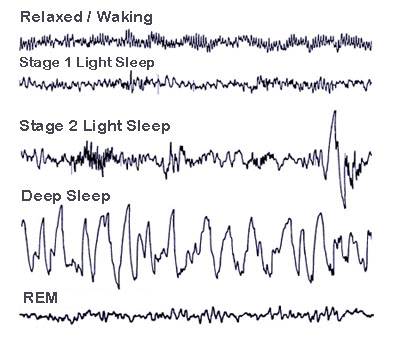

The REM / NREM ratio
All warm-blooded mammals have been found to have REM phases during their sleep (I believe that it has now been confirmed that two very primitive animals, the Australian spiny anteater and duck-billed platypus, also have REM phases during their sleep). Whales and dolphins have evolved a very interesting form of sleep which permits them to remain submerged while they rest: one brain hemisphere stays awake and takes care of breathing and movement while the other sleeps and this alternates during the night (Jouvet, 1994, p. 39; Mukhametov et al., 1977). It seems most birds have evolved a similar custom, but in their case it is to keep an eye open for predators (Rattenborg et al., 1999). The length of the sleep cycle seems to be determined by brain mass. Mice have an inter-cycle period of only 9 minutes, while a monkey or child has a period of around 50 minutes (Woods & Greenhouse, 1974, p. 337). Hunters, as one would expect, are able to sleep longer and more peaceably than the hunted (Meier, 1967, p. 39; Woods & Greenhouse, 1974, pp. 336, 341).| Drugs (partial list) | Effect on amount of REM sleep |
|---|---|
| Alcohol | decreases |
| Amphetiamines | decreases |
| Barbiturates | decreases |
| Caffeine | none |
| Chloral hydrate | none |
| Chlorpromazine | decreases with small doses |
| increases with large doses | |
| LSD | slight increase |
| Lithium | decreases |
| Marijuana | decreases |
| Reserpine | increases with small doses |
| decreases with large doses | |
| typtophane | increases |
Previous section Next section List of sections List of chapters